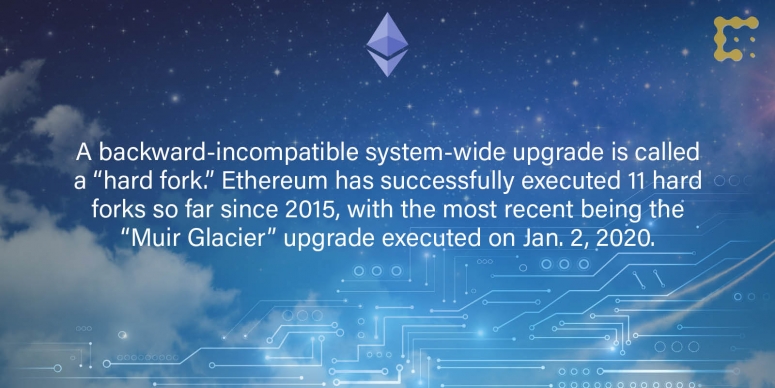What is the intrinsic value of ether?
This is a question I’ve been wrestling with this past week as the ether price set a new all-time high of $1,439.33, according to CryptoX’s price index.
Similar to how many view the current bitcoin price bull run as being credibly different from previous cycles for reasons to do with greater institutional involvement and mainstream interest, among other reasons, I get the sense that the valuation of ether by investors is being looked at this time around in a different light.
The primary reason for why I believe ether’s valuation has shifted in fundamental ways this market cycle compared to previous ones is because this December Ethereum officially launched its parallel staking network, Ethereum 2.0.
If you’re new to Valid Points and the topic of Ethereum 2.0 in general, be sure to check out our 101 explainer on Eth 2.0 metrics to get up to speed about jargon and terminology used throughout this newsletter.
The daily average income of Ethereum 2.0 validators in terms of ETH has been on the slight decline since last week. According to BeaconScan, average income has dropped over the month of January from 0.008063 ETH/day to 0.007768 ETH/day. In dollar terms, however, income has been on the rise given bullish price trends pushing the value of ETH up 66.03% year-to-date.
User participation on the Ethereum 2.0 network has also been increasing at a steady pace of close to 900 new validators each day. There are over 65,000 validators, each staking 32 ETH worth roughly $45,000, at time of writing. An additional 16,000 validators are in a holding queue for entry into the network over the next few weeks.
Because of the continued growth of new users on Eth 2.0, a greater percentage of total ether supply is getting locked away and becoming unusable on the original Ethereum blockchain. Roughly 2.4% of all ETH in circulation is now immovable from Eth 2.0. Some Ethereum investors believe this percentage will grow to be as high as 30% in the future.
A large percentage of total supply being removed from active circulation among decentralized applications (dapps) and transactions between users impacts the velocity of ether as a digital currency. Velocity is the rate or frequency at which units of a currency are exchanged in an economy, or in the case of Ethereum, in a blockchain system. If we think about ETH as money, ETH’s velocity is negatively impacted as a result of Ethereum 2.0.
However, as certain Ethereum experts have pointed out, ETH, unlike BTC, is much more than an asset for transfers of value, or even a store of value for that matter. ETH can be likened to a commodity asset needed for fueling a new decentralized web and financial system. ETH can also be viewed as a capital asset inextricably linked in value to the popularization and adoption of proof-of-stake blockchain protocols.
With the advent of Ethereum 2.0, long-term holdings in ETH represent long-term bets on the decentralized web and/or finance, as well as the viability, scalability and security of proof-of-stake blockchains to the same, if not higher degree, than proof-of-work blockchains.
There are a number of other use cases for Ethereum’s native crypto asset, ether, besides its use as payment for decentralized applications and staking on Ethereum 2.0. However, these are two that are likely to continue motivating investments in ETH as Ethereum 2.0 development advances.
New frontiers
Ether has set a new record price at $1,439 for the first time in two years, some five days to the date.
A lot has changed since then. In this week’s New Frontiers, we’ll take a look at some major headlines – good and bad – that have defined the cryptocurrency’s journey since January 2018:
Initial coin offerings (ICOs) raised more money in the first three months of 2018 than the whole of 2017, according to data collected by CryptoX.
In April 2018, the company known for having raised the most amount of funds from an ICO was messaging app provider Telegram. The funds raised accumulated to a total of $1.7 billion. However, in just a few months, blockchain startup Block.one would raise $4 billion through its yearlong ICO for the crypto asset EOS.
Mining is a nuisance to many Ethereum fans, which is why it’ll slowly be phased out with Eth 2.0.
A new mining algorithm called Programmatic Proof-of-Work (ProgPoW) sparked life into this conversation before the February 2019 Constantinople hard fork. ProgPow would have made it easier for small miners to participate in the mining game. Yet, it ultimately failed to be implemented. It’s failure now stands as a lesson in “how to do” decentralized governance.
Ethereum Upgrades as Hard Forks Activate on Blockchain – February 2019
The Constantinople and St. Petersburg hard forks were pushed live to the mainnet. The sixth and seventh backward-incompatible code changes prepared Eth 1.x for its future marriage with the Eth 2.0 Beacon Chain. Ethereum hard forked twice again one year later with the Istanbul and Muir Glacier updates.
CryptoX reported live from DevCon 5 in Osaka, Japan, – the last physical Ethereum DevCon before the Covid-19 pandemic. The annual gathering of Ethereum developers reacted to Ethereum co-founder and venture firm ConsenSys CEO Joe Lubin acknowledging that Ethereum wouldn’t be able to scale under the original roadmap. Of course, that’s what Ethereum 2.0 is for.
Ethereum startup Matter Labs unveiled its layer 2 solution, Zk-Sync, for increasing how many transactions Ethereum can handle from its decentralized applications (dapp). Within a year, rollups would widely become considered a part of Ethereum’s long-term scaling roadmap.
Note: Startup Optimism launched its own rollup variant called the Optimism Virtual Machine (OVM) last Friday.
Why DeFi’s Billion-Dollar Milestone Matters – February 2020
For Ethereum, 2020 was the year of decentralized finance (DeFi). These Ethereum native applications allow for the trading, lending and borrowing of digital assets. The total value locked (TVL) – a metric not dissimilar from assets under management (AUM) – broke over $1 billion by February 2020 and has since shot past $25 billion, according to DeFi Pulse.
Ethereum 2.0 Beacon Chain Goes Live as ‘World Computer’ Begins Long-Awaited Overhaul – December 2020
Eth 2.0 came into reality some five years after the launch of Ethereum with the release of the Beacon Chain on Dec. 1. The new chain acts as a backbone to a future Ethereum network intended to handle more transactions for cheaper that purports to be more environmentally friendly than proof-of-work alternatives such as Bitcoin.
Validated takes
- A network upgrade, commonly known as a hard fork, is planned for Ethereum 2.0 in the mid-year (HackMD post, Ben Edgington)
- ETH sets new all-time price high near $1,440 (Article, CryptoX)
- Lido Protocol does Ethereum 2.0 staking but with a DeFi twist (Article, CryptoX)
- Optimism soft launches an new Ethereum throughput solution with Synthetix (Article, CryptoX)
- Valuecoin, an algorithmic stablecoin like DAI, goes live on Ethereum (Article, CryptoX)
- Cryptocurrency exchange Kraken introduces a “bonding period” for earning rewards on Ethereum 2.0 (Blog post, Kraken)
- Making the case for decentralization transparency (Blog post, stakefish)
- Interview with DJ Justin Blau, better known as 3LAU, on why he became interested in blockchain technology (Podcast, The Defiant)
Factoid of the week


We’ll soon be incorporating data directly from CryptoX’s own Eth 2.0 validator node in our weekly analysis. All profits made from this staking venture will be donated to a charity of our choosing once transfers are enabled on the network. For a full overview of the project, check out our announcement post.



